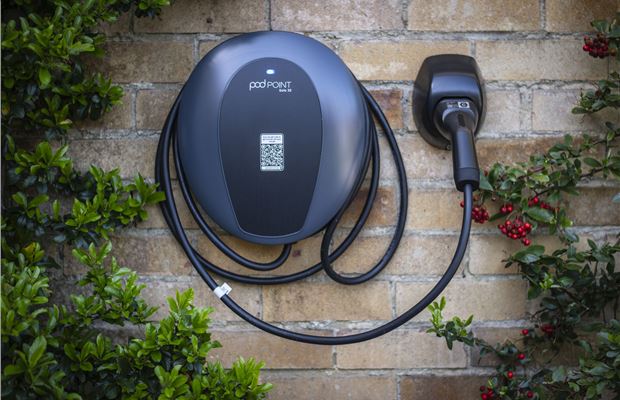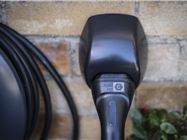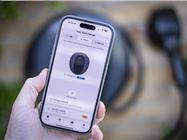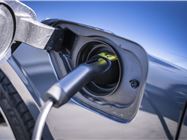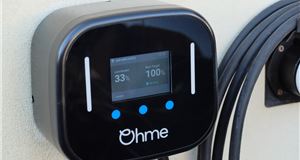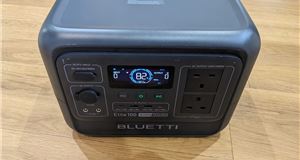What is it?
One of the things we always mention in our electric car reviews is if your thinking about buying an EV and you've got the space, a EV home charger is a essential accessory. It makes the whole ownership experience much simpler and could potentially save you a lot of money compared to relying on public charging. And if you've ever tried to charge an electric car with a 3-pin connection, you'll appreciate how impractical it is, with cars taking upwards of 30 hours or longer to be charged.
As the industry launches more EVs, there's now a huge amount of choice when it comes to home EV chargers. Pod Point is perhaps one of the more familiar brands on the market right now, having been established back in 2009. Not only has it worked with a number of automotive brands over the years, but it's worked with a number of home builders and sites like Gatwick Airport. While we've seen a few home EV charging brands come and go over the years, Pod Point is now part-owned by EDF if you're looking for some extra peace of mind to ensure your charging set-up is future-proof.
For home buyers Pod Point offers the Solo 3S and is available in a number of different combinations. Starting at £849 (including standard installation), this gets you the Pod Point Solo 3S with a 3.6kW power rating. Badged as 'Universal' this comes without a supplementary lead so you can use your own, but for an additional £50 you can get a tethered solution that comes with a 5 metre type 2 cable permanently attached.
A 3.6kW home charger might suffice if you're running a plug-in hybrid car, but for EV owners you're better off with a 7kW charger, which is where Pod Point's more powerful Solo 3S 7kW home charger comes in. Prices start at £1,099 for a universal model, or £1,149 with a tethered cable, and that's the unit we're testing here.
The Pod Point Solo 3S is supported by the Pod Point App, enabling you to optimise your charging costs, allowing you to do things like sync charging times when your tariff is at its lowest, while it's also solar charging compatible and has over-the-air updates. It comes with a five-year warranty - one of the best available.

What is it like?
Perhaps one of the blockers of getting a home charger installed for some people is the actual installation process. How easy is it? Will it be possible? If our experience was anything to go by, getting our Pod Point Solo 3S installed with an incredibly simple process.
Once you've selected the charger you want there's a comprehensive online form to answer. This includes supplying photos of where you want the charger to be installed, how far its going to be from the fusebox and video showing the overall set up (preferred location, fusebox and power supply etc). The only other thing you'll need to hand is a home electrical certificate (EICR). Once this has all been supplied it then enables Pod Point to evaluate if its going to be a standard installation or not - in most cases (Pod Point reckons 90%) its a straightforward standard installation.
With our installation given the green light as a standard install, we only had to wait a few days for an appointment. Our installer was brilliant, answering any questions and talking us through the whole process and options available for the install. An hour or so later and we had a Pod Point 3S Solo neatly attached to our garage wall, with the cabling running to the power supply on the internal wall of the garage (again, this had been fitted really well and had minimal impact on to the various bits and bobs we had there).
While not as slick looking as some of the more design-orientated (and more expensive) chargers on the market, it's a nicely designed unit, while the tethered cable wraps round the box neatly when not in use and the plug slots into a separate wall mount next to it.
Unlike some chargers there's no display on the Pod Point Solo 3S, with all controls carried out for the supporting Pod Point App. Our installer connected our box to our home WiFi and once connected to the app, allows you to schedule charging (handy if you have an off-peak electricity tariff so you can charge overnight), keep track of your charging costs (you can add you energy tariff to the app) and other things. Need to charge in the day? If your car's connected you can simply tell the app to start charging now, while you can lock the Pod Point Solo 3S to stop unwanted users hooking up their car to charge while you're away. There's also a handy section in the app that provides live updates of the current CO2 emissions state on the national grid - you can use this to decide when you charge to help minimise your carbon footprint.
Any negatives? This probably won't apply to many households, but the app currently only lets you only have a single vehicle associated with the app, so should you have access to more than one EV at home, you'll have to delete and add cars to schedule in charging etc.

Should I buy one?
We've been using it now for three months or so and it's proved to be extremely reliable. We've used it with a variety of cars as well, from plug-in hybrids like the Skoda Superb Estate, to EVs like the Audi Q6 e-tron and Ford Explorer. All have happily connected and charged as expected without issues.
We couldn't fault the installation process, while the unit itself appears well made (and it's great to have that five-year warranty to back that up), while the app is great - it's responsive and stable. If you're looking for a dependable and easy to use EV home charger, then the Pod Point Solo 3S is easy to recommend.


